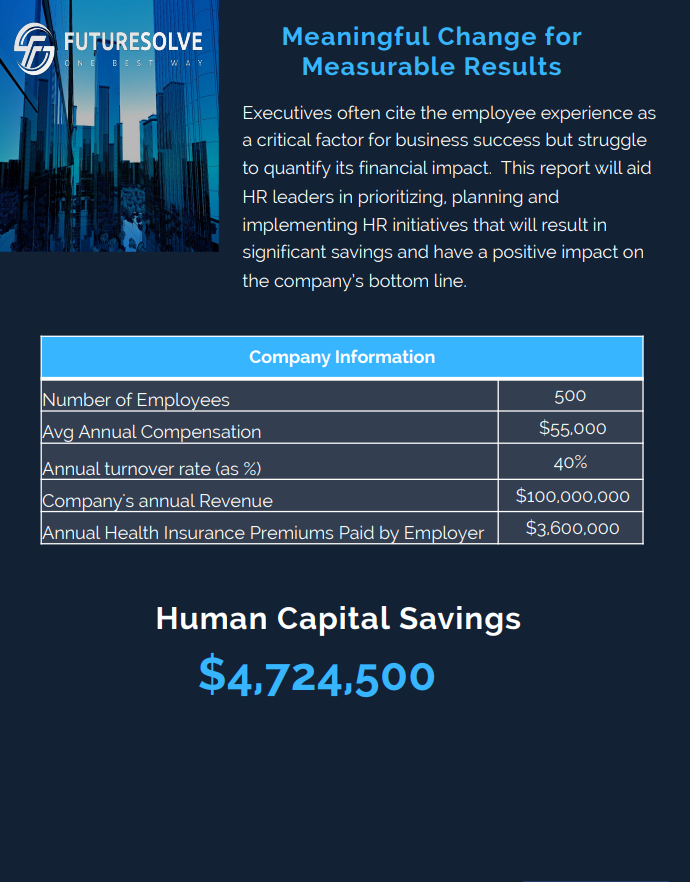High turnover rates can be detrimental to any organization, leading to decreased productivity, increased recruitment costs, and a negative impact on employee morale. However, addressing turnover doesn’t always require a substantial financial investment. By focusing on strategic adjustments to key areas such as employee experience, hiring, onboarding, training, management leadership, and more, businesses can effectively reduce turnover rates without breaking the bank. In this blog, we’ll explore low-cost strategies to tackle high turnover and foster a more engaged and loyal workforce.
1. Conduct an Employee Experience Review:
Start by understanding the factors contributing to high turnover through an in-depth review of the employee experience. Utilize surveys, focus groups, and one-on-one interviews to gather feedback from current and former employees. Identify pain points, such as lack of career development opportunities, poor work-life balance, or ineffective communication channels.
2. Streamline the Hiring Process:
Simplify and streamline the hiring process to attract and retain top talent. Optimize job descriptions to accurately reflect the role and expectations. Utilize cost-effective recruitment channels such as social media, employee referrals, and job boards. Implement efficient screening and interviewing techniques to identify candidates who align with your organization’s culture and values.
3. Enhance Onboarding Programs:
Invest in robust onboarding programs to set new hires up for success from day one. Provide comprehensive orientation sessions to familiarize employees with company policies, procedures, and culture. Assign mentors or buddies to support new hires during their transition period. Encourage open communication and feedback to address any concerns or challenges early on.
4. Prioritize Ongoing Training and Development:
Offer continuous learning and development opportunities to help employees grow and advance within the organization. Implement cost-effective training initiatives such as online courses, webinars, cross-functional projects, and peer-to-peer learning. Empower employees to acquire new skills and competencies that align with their career aspirations and organizational goals.
5. Foster Effective Management Leadership:
Effective leadership plays a crucial role in employee engagement and retention. Provide leadership training and coaching to managers to enhance their communication, coaching, and conflict resolution skills. Encourage managers to build strong relationships with their team members, provide regular feedback, and recognize and reward achievements.
6. Promote Work-Life Balance:
Promote a healthy work-life balance to prevent burnout and improve employee satisfaction. Encourage flexible work arrangements, such as remote work options, flexible hours, and compressed workweeks. Provide access to wellness programs, employee assistance resources, and stress management workshops. Demonstrate a commitment to employee well-being by fostering a supportive and inclusive work environment.
7. Implement Employee Recognition Programs:
Recognize and appreciate employees for their contributions and achievements through cost-effective recognition programs. Celebrate milestones, such as work anniversaries, project completions, and exceptional performance. Implement peer-to-peer recognition platforms or suggestion boxes to empower employees to acknowledge their colleagues’ efforts.
8. Solicit and Act on Feedback:
Create avenues for employees to voice their opinions, concerns, and suggestions for improvement. Conduct regular pulse surveys to gauge employee sentiment and identify areas for enhancement. Actively listen to feedback and take tangible steps to address issues and implement solutions. Communicate transparently with employees about the actions being taken based on their input.
In conclusion, reducing high turnover rates doesn’t always require significant financial investments. By strategically addressing key areas such as employee experience, hiring, onboarding, training, management leadership, and work-life balance, organizations can improve employee retention and create a more engaged and committed workforce. By prioritizing employee satisfaction and investing in their growth and development, businesses can cultivate a positive organizational culture that fosters loyalty and longevity.





























